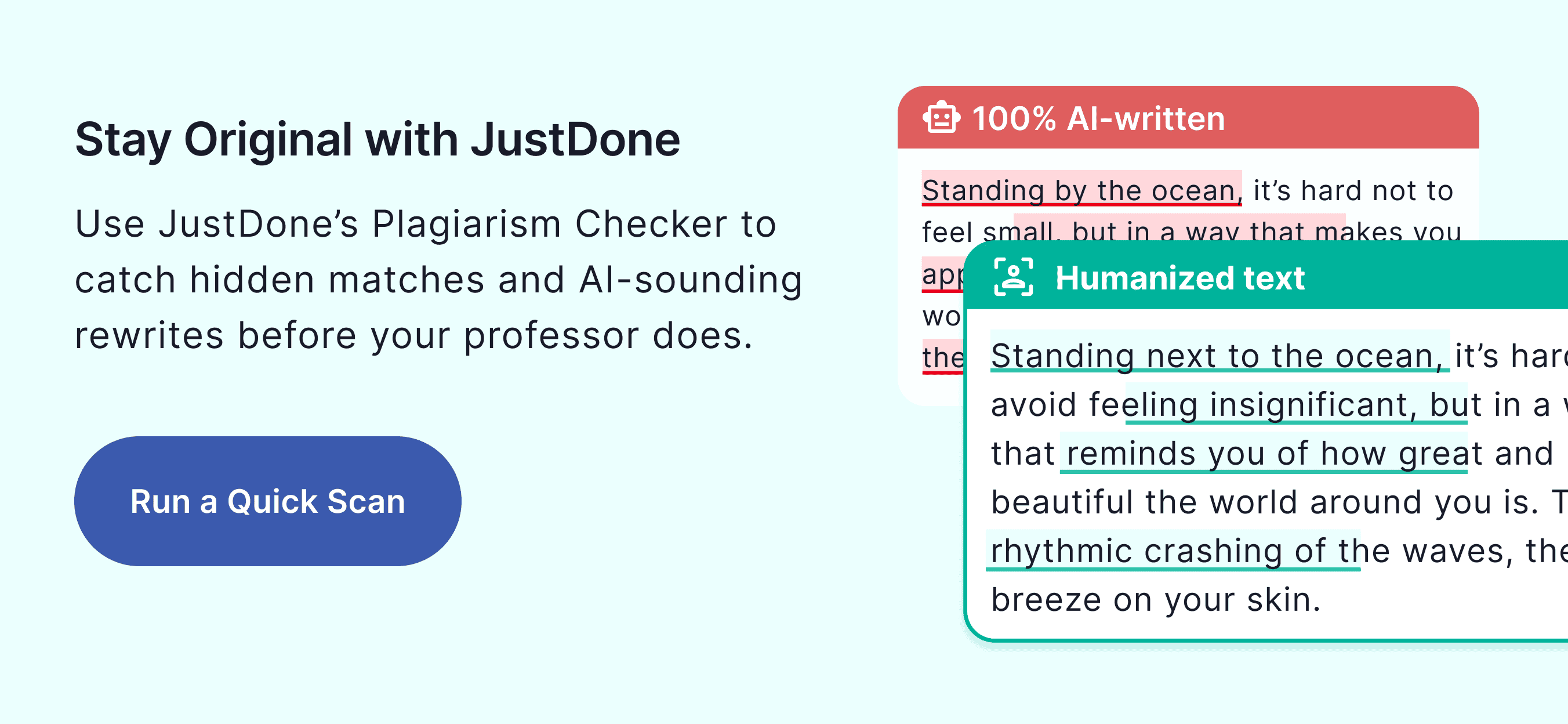In a world where originality matters more than ever, having the best plagiarism checkers at your fingertips can make all the difference. I've tested and compared seven top plagiarism tools, focusing on features, pricing, accuracy, and real-world student use cases. Here's your go-to guide what to use and when, with main features, pricing, pros, cons, and my favorite JustDone AI's plagiarism checker coming out on top.
Best Plagiarism Checkers: Comparative Analysis
If we look over the period between 2018 to 2024, the average plagiarism rate in academic works has changed significantly. Growth spikes correspond with the great shift to online learning and generative AI tools, while declines are due to improvements in detection and academic integrity policies.
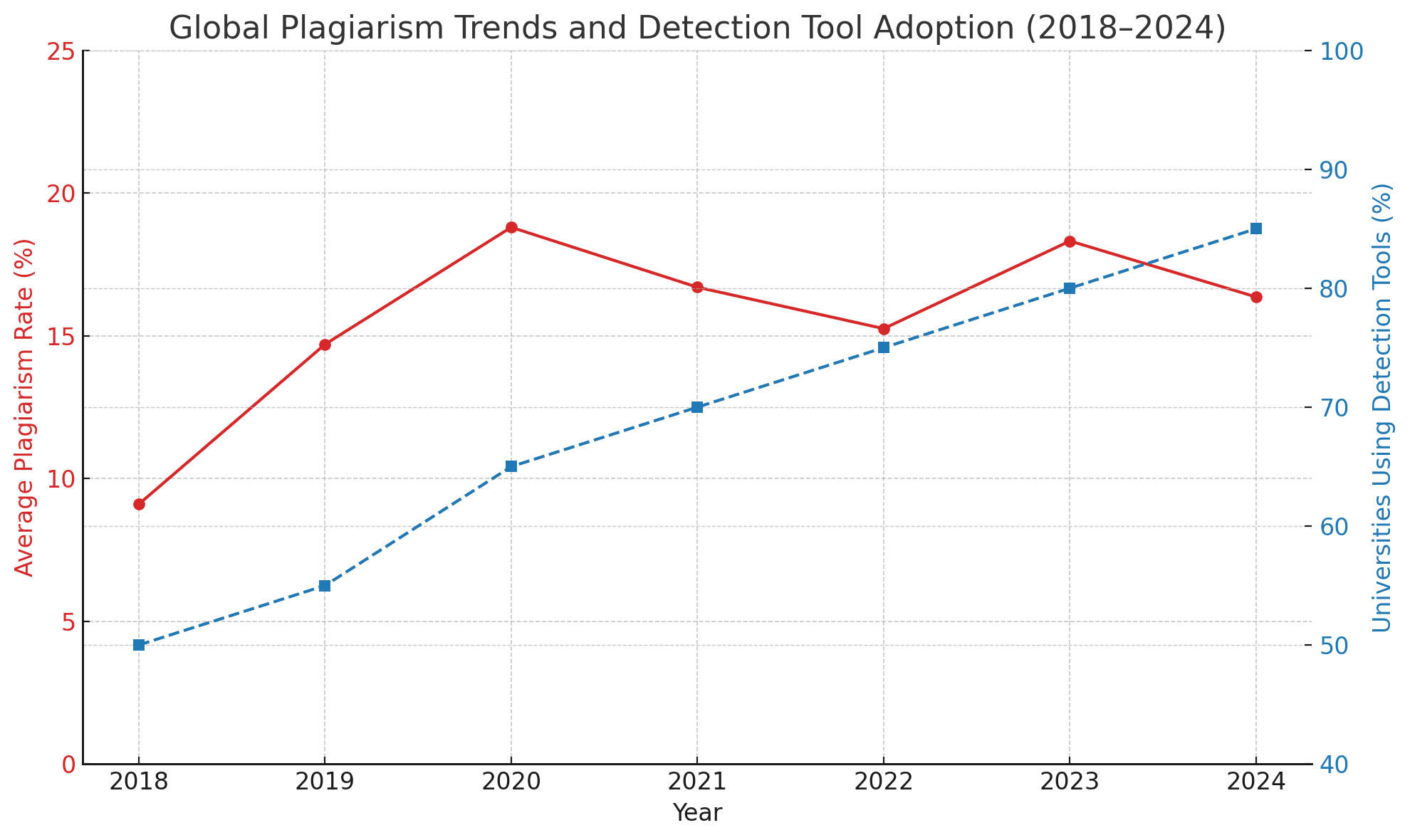
So, a good plagiarism checking tool is key for academia to decrease the risk to be flagged. Let's do a quick check of all the top features of the 7 best plagiarism checkers I have tested.
| Tool | Academic DB | Web DB | AI Detection | Grammar Tools |
|---|---|---|---|---|
| JustDone | Yes | Yes | Yes | Yes |
| Turnitin | Yes | Yes | Yes | No |
| Grammarly | Limited via ProQuest | Yes | No | Yes |
| Copyscape | No | Yes | No | No |
| Copyleaks | Yes | Yes | Yes | No |
| Compilatio | Yes | Yes | Yes | No |
| PlagiarismCheck.org | Yes | Yes | Yes | No |
After this brief overview, let's dive into detail, analyzing each of these plagiarism checkers separately.
Top Free Plagiarism Checkers
Here's the result of my own test based on analysis of the 7 best plagiarism checkers that I used.
JustDone AI Plagiarism Checker – Student-Friendly Powerhouse
JustDone's plagiarism checker has become one of my favorite tools that helps students navigate the modern writing landscape.
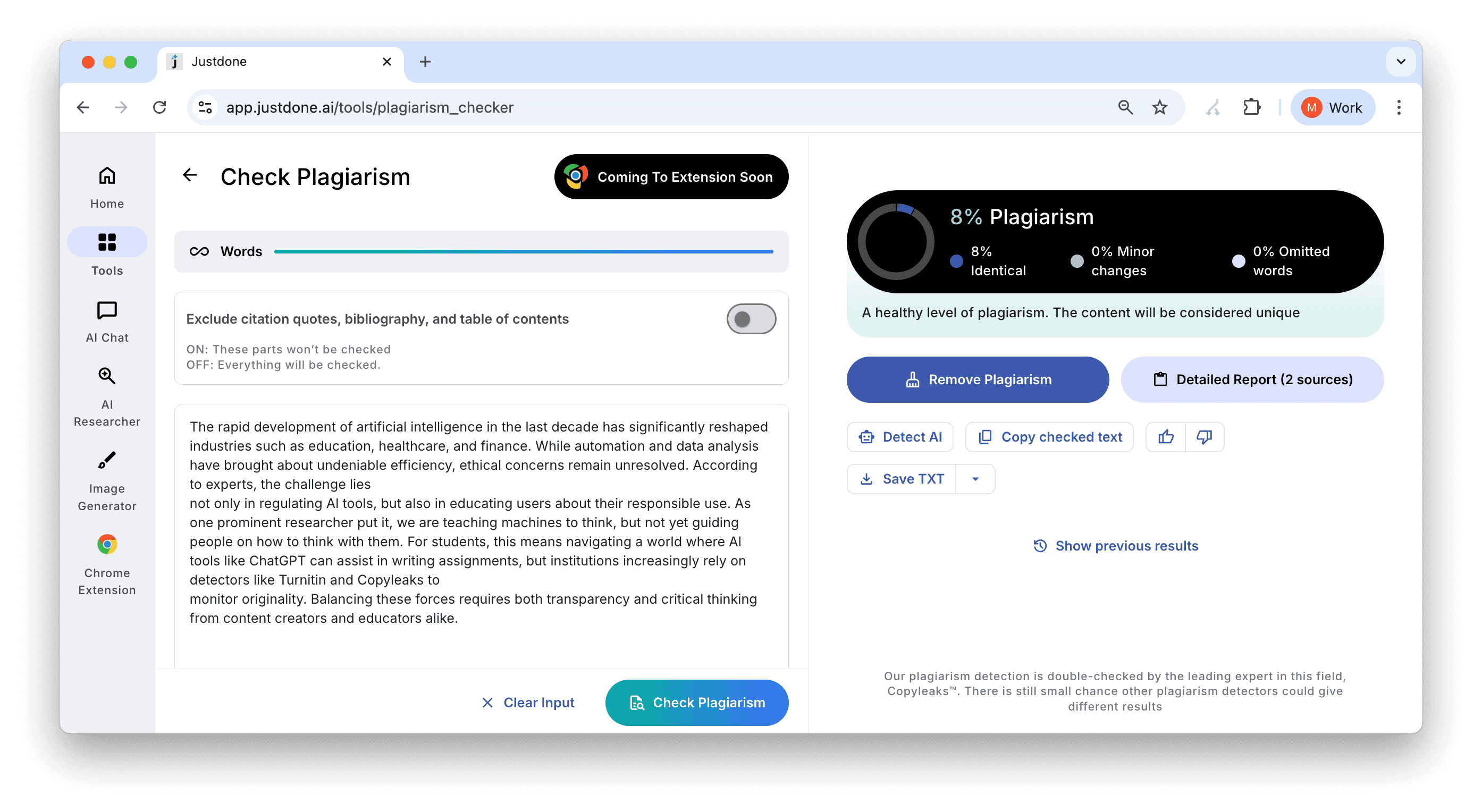
It's not just a plagiarism checker; it's more like a full content workspace. You'll find everything from grammar correction to an AI detector and even a humanizer built right into the dashboard. What I like most about its plagiarism checker is that it doesn't just match exact phrases, but actually picks up on reworded content using semantic analysis, which makes it feel like it's keeping up with how students actually write with AI today.
JustDone offers a free trial, then monthly or annual plans starting from $29.99. This tool is your best choice if you're writing essays, tweaking AI outputs, or just need something to catch mistakes before submission. JustDone works fast and gives you real, detailed feedback. The only downside is that if you're only using it to run a quick plagiarism scan, it might feel like more tool than you need. But if you're working with AI-generated content regularly, it's worth it.
Turnitin – The Institutional Standard of Robust Plagiarism Checker
Turnitin is still the big name in plagiarism detection for schools and universities. The Markup claims that Turnitin has partnerships with more than 20,000 institutions globally and a repository of over 1.8 billion student paper submissions.
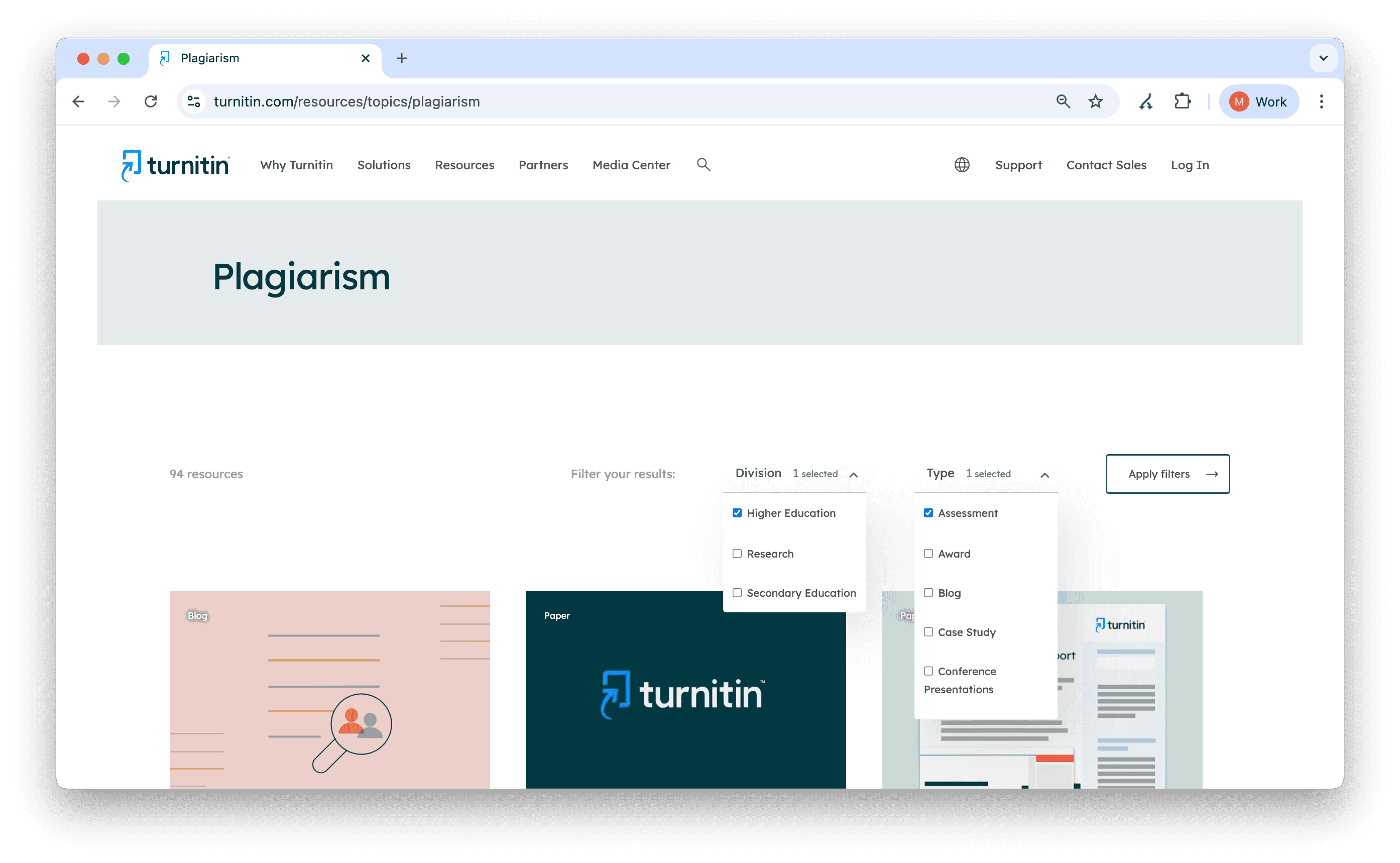
It's the one most professors trust, and if you've submitted a paper in college, you've probably had your work run through it. It checks everything—from online content to previously submitted student papers and academic databases.
It's not something you can just sign up for as a student. Your school needs to be subscribed, and pricing happens behind the scenes, usually part of your tuition or course fees. What makes Turnitin stand out is how deeply it checks and how clear its originality reports are. On the downside, it's not accessible unless your institution provides it, and setup is something only schools can manage.
Grammarly – Grammar and Plagiarism Combo
Grammarly is already a staple in most students' writing toolkits, and if you upgrade to the Pro version, it includes a plagiarism checker too.
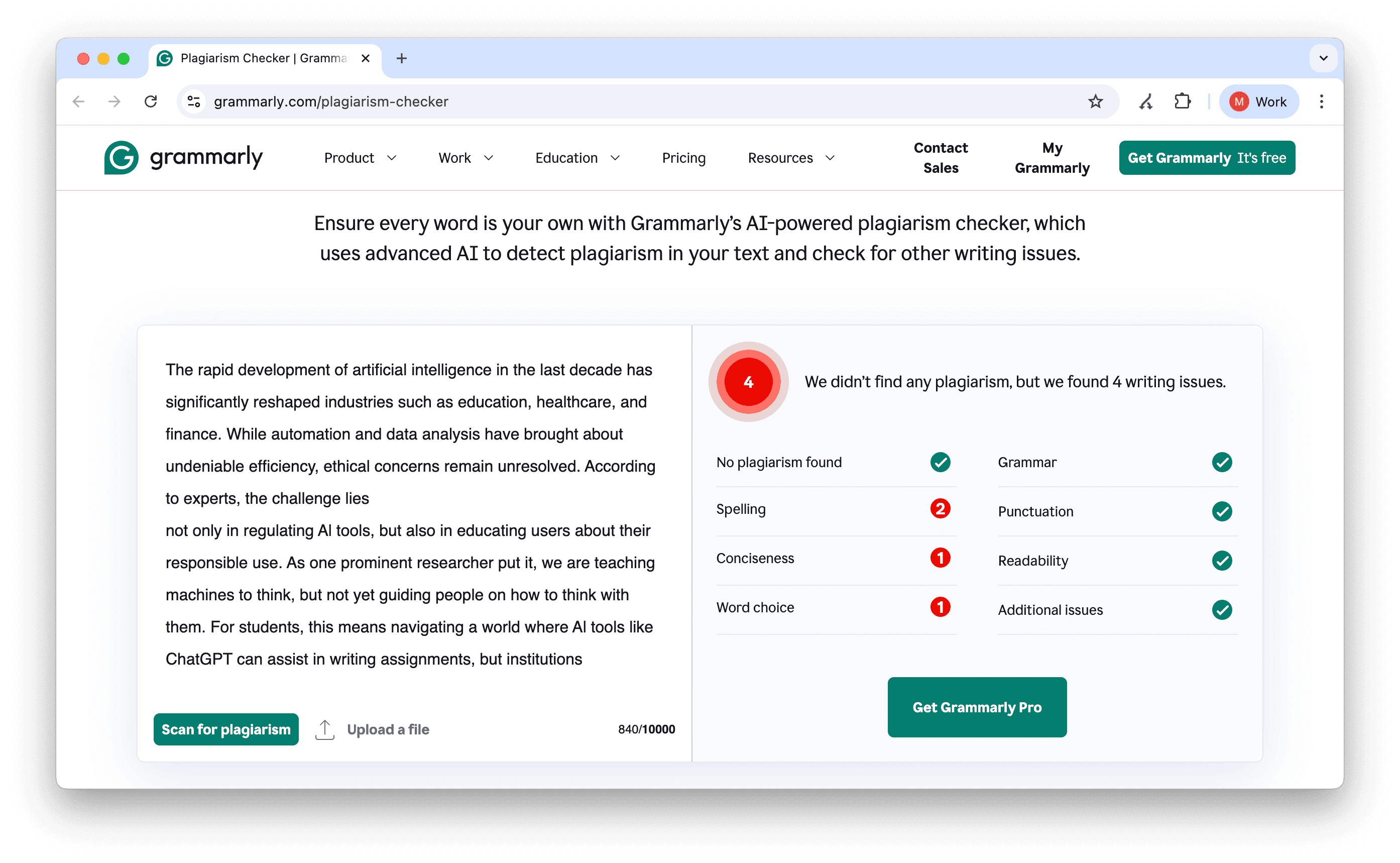
It scans your text against a massive online database and even some academic sources through ProQuest. What's nice is that everything works in real time—grammar fixes, tone suggestions, and plagiarism scans all in one place.
It's free if you just need help with grammar, but to get plagiarism detection, you'll need to go Pro, which costs around $30 a month unless you pay annually. Grammarly is sleek and easy to use across platforms, but its plagiarism detection isn't as deep as Turnitin or JustDone AI.
Grammarly's plagiarism checker is great for general writing, blog posts, and email, but if you're working on serious research or academic essays, it may not be enough.
Copyscape – Duplicate Content Detection tool for Web
If you're managing a blog or publishing web content, Copyscape is a go-to.
It's fast, lightweight, and great at catching content lifted from the web. I've used it a lot for SEO writing and quick duplicate checks. The pricing is flexible, pay-as-you-go.
You can scan short texts subscrubung for Copysentry that automatically monitors the web for copies of your content , emailing you whenever new copies are found. It costs just a few cents for subscription.
The longer the text, the higher the chance Copyscape will successfully detect matches across the web. More content gives it more context to work with, which improves its accuracy in spotting duplicates.
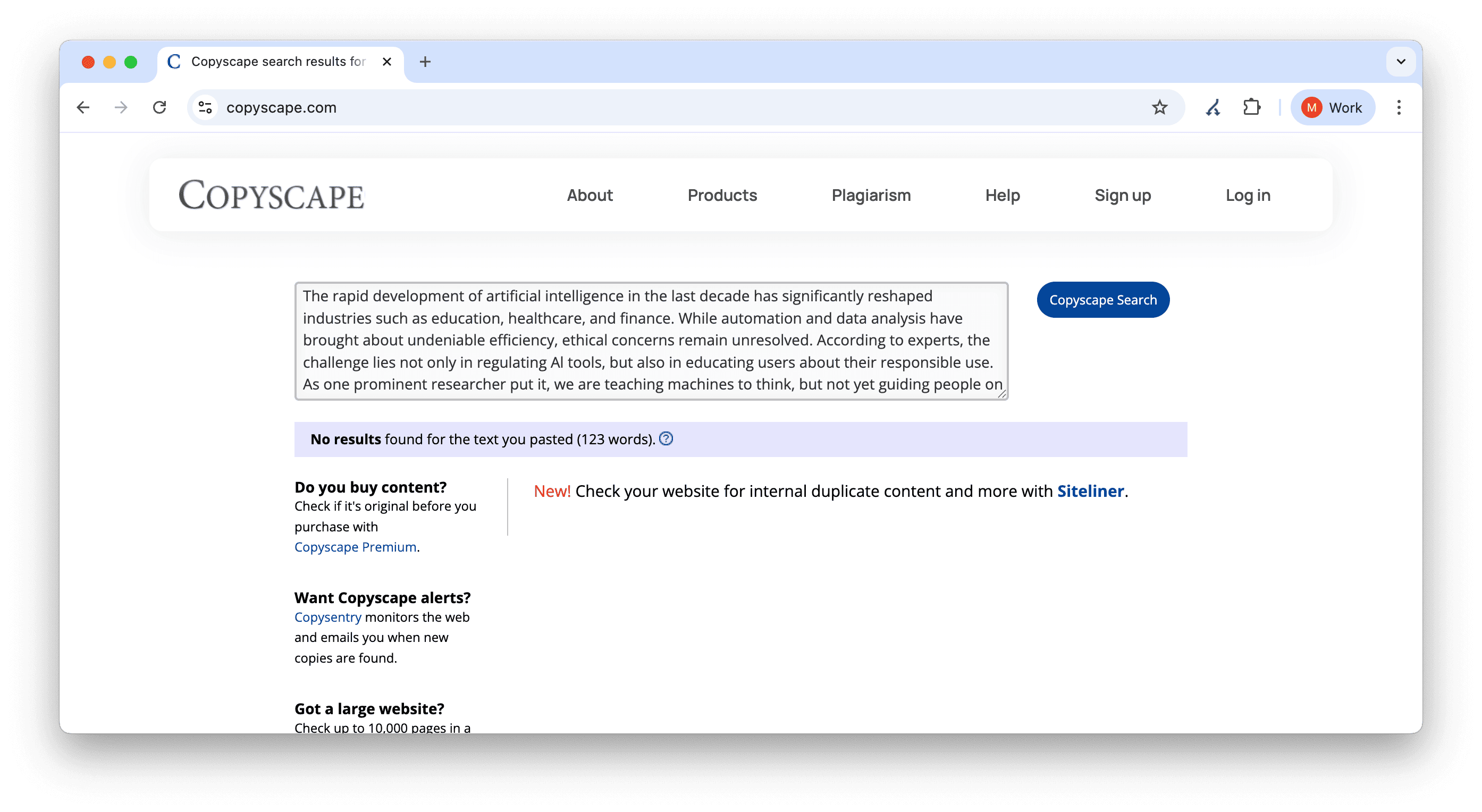
If your main concern is making sure your blog post isn't a copy of something else online, Copyscape works well. But if you're in school, it's probably not the right fit, especially since it doesn't offer grammar or AI support.
It doesn't scan academic databases, so it's not useful for student work or essays, but for content creators, it's perfect.
Copyleaks – AI-Aware Plagiarism Detection for Academic and Business Use
Copyleaks is a plagiarism checker designed for both academic and professional settings, with a strong focus on detecting AI-generated content.
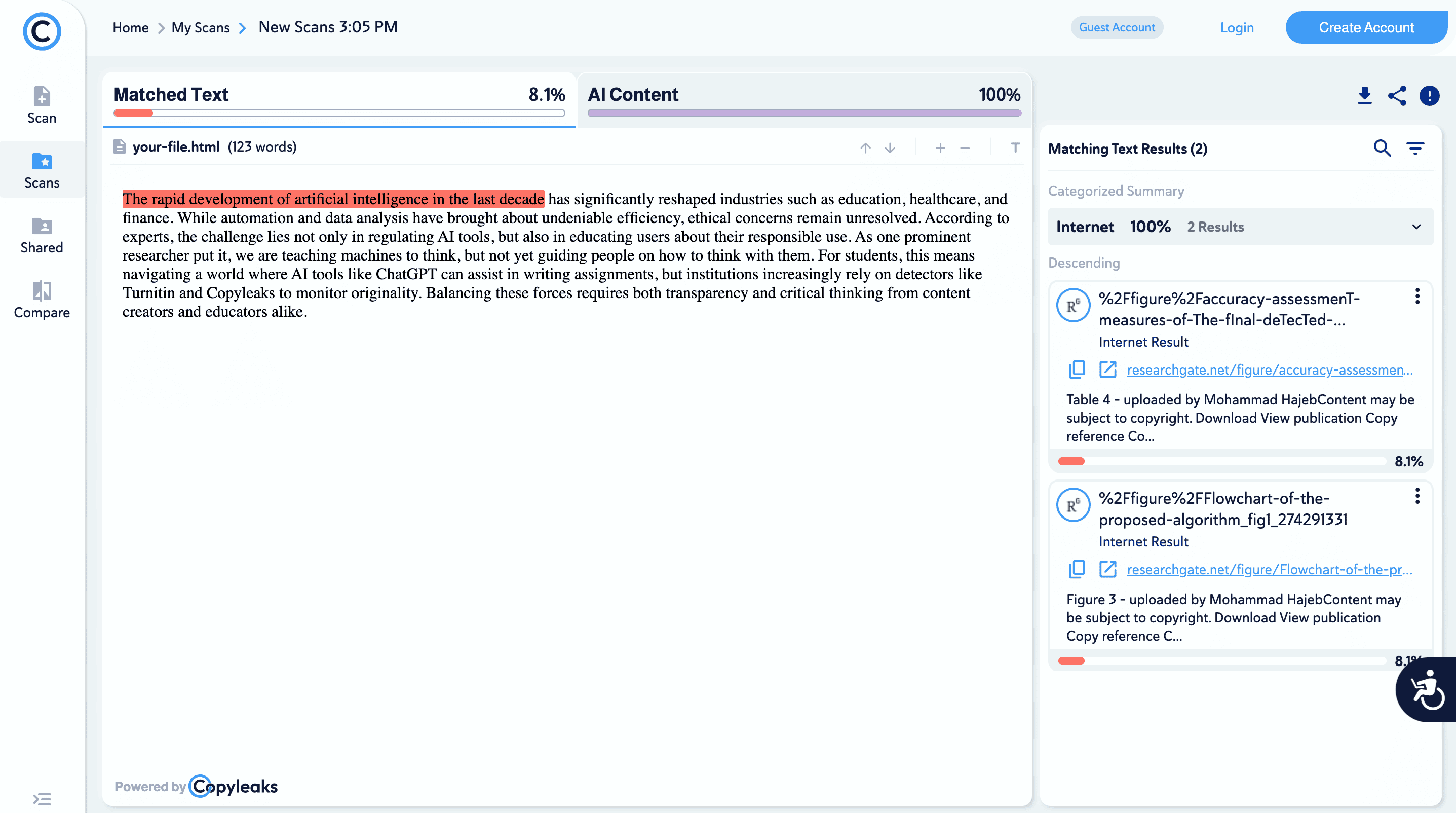
It scans against web pages, academic journals, and even code repositories, making it ideal for schools and businesses that deal with varied types of content. The interface is clean, reports are detailed, and it can highlight both plagiarism and AI-written segments, which is rare among similar tools.
One downside is that it's a bit pricey compared to simpler checkers, and the pricing depends on how much content you need to scan. But if you're serious about catching both traditional and AI-based plagiarism, it's worth it. In my experience, Copyleaks offers one of the most advanced detection engines available today, especially useful if you're working with longer or technical content that might slip past basic tools.
Compilatio – Plagiarism Checker and AI Detector
Compilatio's plagiarism detection tool is mainly used in academic institutions across Europe, especially in France and other French-speaking regions.
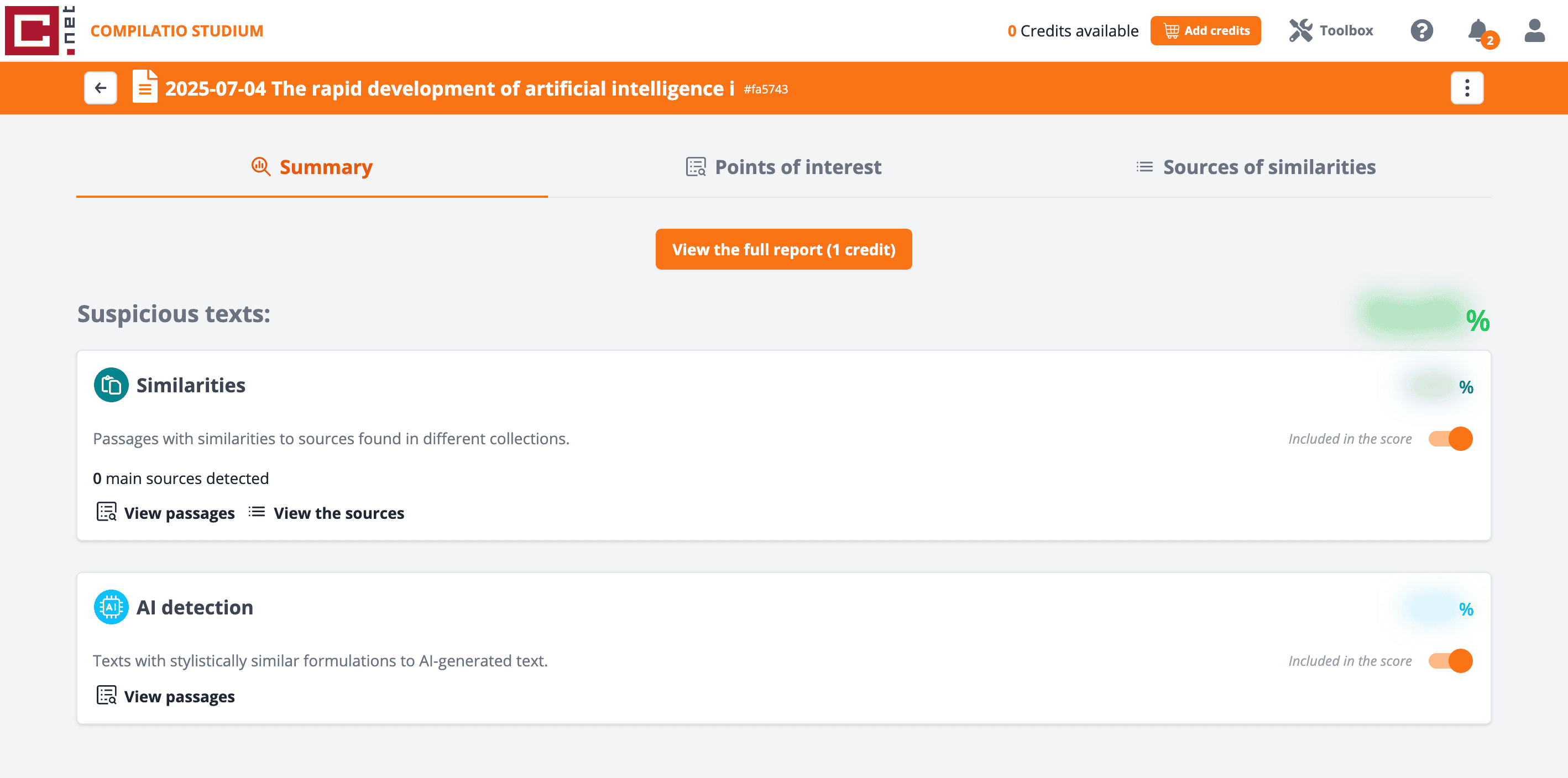
What sets it apart is its strong integration into educational workflows: it offers dashboards for teachers and separate student tools like Studium, which teaches proper citation practices alongside detection.
It scans content against a large academic and web-based database, and the reports are clear. On the downside, Compilatio is less known in the English-speaking world and doesn't always catch paraphrased or AI-reworded content as well as newer tools like Copyleaks or JustDone. Its pricing is based on institutional or individual word-count packages, and while it's affordable for schools, it might not be the first pick for solo users outside academia.
Overall, Compilatio is a solid, trusted plagiarism checker if you're in an academic environment, especially in Europe.
PlagiarismCheck.org – LMS-Ready Detector with AI Option
PlagiarismCheck.org is a newer name, but is gaining attention because of its AI detection capabilities.
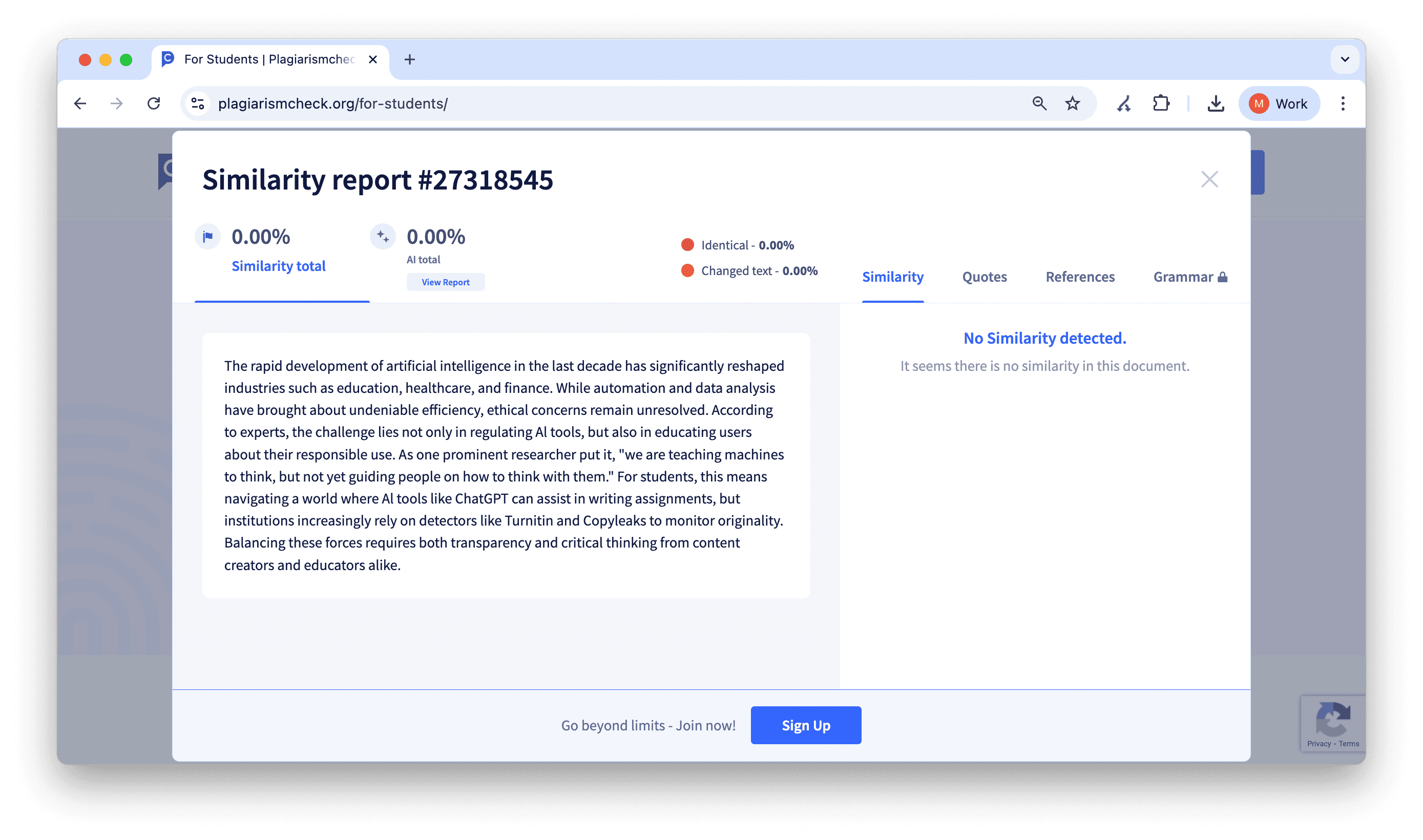
It's aimed at educators handling entire classrooms, and it lets teachers review batches of student assignments at once. It integrates with systems like Canvas and Google Classroom, making it convenient for schools.
The checker highlights both traditional plagiarism and AI-generated text, which makes it helpful in today's academic environment. You'll need to request pricing or go through your school for access.
Overall, it's not the flashiest tool out there, the interface could use some polish, but it gets the job done.
Which tool is the best to detect plagiarism?
After spending a good amount of time testing all these plagiarism checkers across different types of content, I've figured out what works best depending on the situation, and here's how I usually decide.
If I need something quick, intuitive, and actually made with students in mind, I go with JustDone AI. It's not just easy to use, but it also has so many tools bundled into one dashboard that I don't need to switch between platforms. It's saved me time and stress more than once.
When I'm working with universities or helping someone submit through an academic institution, it's almost always Turnitin. It's the one most schools use, and it's reliable, though not always the most accessible unless your school provides it.
For more casual writing or when I want grammar help and a quick plagiarism scan together, Grammarly is a solid option. It's smooth, user-friendly, and great when you're working on things like cover letters or blog posts.
If I'm reviewing web content, especially blog articles or landing pages, Copyscape is what I turn to. It's fast and designed to spot duplicate content on the internet, which is key when you're writing online.
And when the work happens in classroom platforms like Canvas or Google Classroom, I've seen PlagiarismCheck.org work pretty well. Plagiarism checking tools are built to integrate with those systems and help teachers keep track of originality without having to jump through extra hoops.
